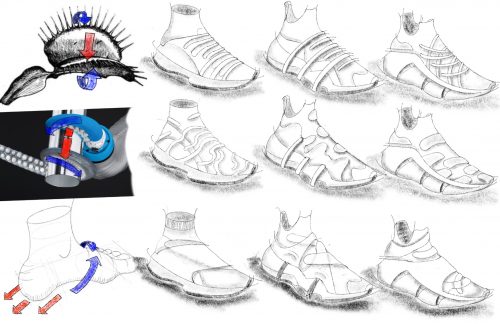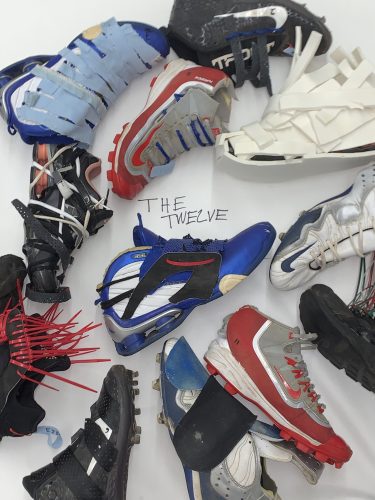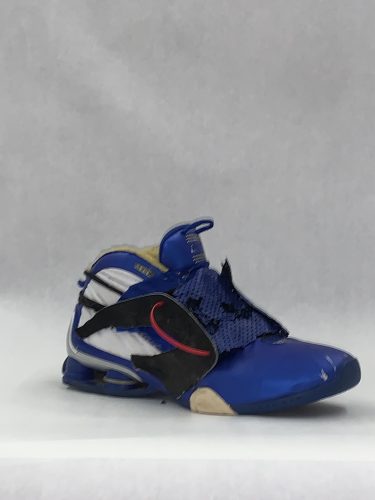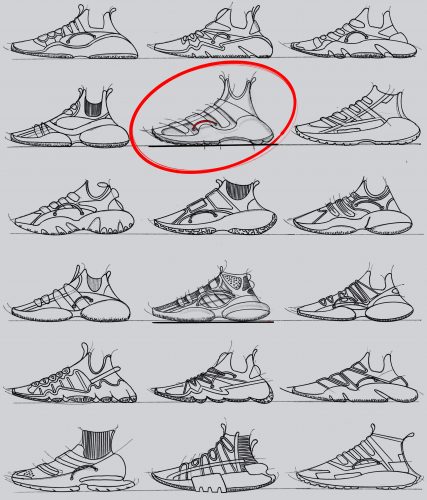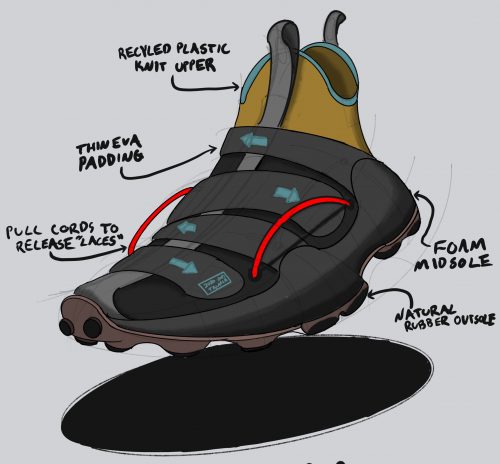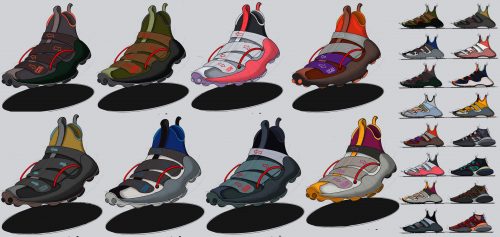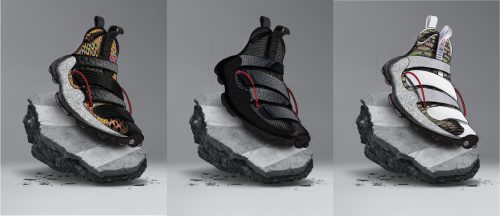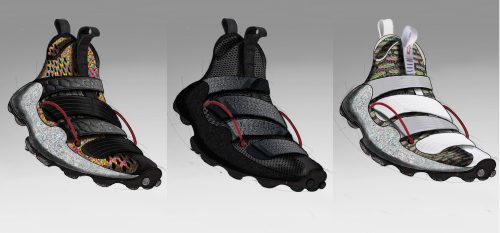Topic/problem description
Footwear has become increasingly popular at the turn of the century due to professional athletes and celebrities collaborating launching lines with established brands. This has helped turn sneakers from an unassuming product into a commodity outside of performance-based solutions. This is evident in the rise of the new niche hobby community known as “sneakerheads” who collect, trade, and sell sneakers This community has helped explode the footwear industry and create sub economies focused around sneaker reselling and trading making them a very popular consumer products amongst these demographics. In 2020 alone, “The total global footwear market size was valued at $365.5 Billion”. There is however an apparent pitfall as there are not many widely produced solutions for those with disabilities.
Adaptive fashion itself is a fairly new concept that brands are starting to invest more heavily into. This rise of a new market is due to the very large demographic of individuals who can not access traditional apparel and footwear due to some type of disability. This can range from physical as well as mental causing them to struggle with products. In the U.S. the disabled community, “has a collective disposable income of around $490 billion”. With proper consultation from medical professionals brands can effectively develop adaptive fashion lines that do not differ too much from able bodied fashion lines commonly found in stores. In addition, “The cost of creating lines for differently abled customers are comparable to launching an extended sizing collection.”
Primary research with target consumers shows that these individuals are more receptive of brands that can offer accessible options for them. Taking this feedback into account there is a demand for styles that are fashion-forward as well as functional. Furthermore a direct solution would have to offer an innovative approach to the process of “lacing up” sneakers as well as being a product that is aesthetically pleasing to the consumer.
With these factors in mind, “How might we design a human centered solution for those with limited mobility/motor skills while utilizing sustainable materials?”
Solution
Talaria combines a hands-free entry with a sustainable blend of materials to give individuals with disabilities a functional yet stylish solution to footwear. The name Talaria is inspired by the winged sandals worn by the Greek God Hermes that gave him the ability to fly. This sneaker gives “flight” for individuals with various disabilities while striking a balance between innovation and aesthetics.
Inspired by the venus fly trap and how it captures its prey I set out to see if I could utilize a real world solution for the closing system. This led me to taking inspiration from the mechanical system seen in bear traps. This shoe slams shut when athletes step on the pressure plate and to take off just pull on the oversize pull cords located on the side of the shoe. The aesthetic of the shoe was directly influenced by nature as well as streetwear culture with the purpose of being stylish and being able to support the day to day demands of disbaled individuals.
References
Gaffney, A. (2019, July 29). The $400 billion adaptive clothing opportunity. Vogue Business.https://www.voguebusiness.com/consumers/adaptive-clothing-differently-abled-asos-target-tommy-hilfiger.
Chouhan, N., Vig , H., & Desmukh, R. (2020, April 20). Footwear Market Size, Share & Growth: Research Report 2027. Allied Market Research. https://www.alliedmarketresearch.com/footwear-market.

